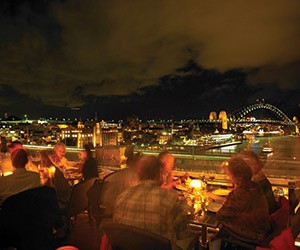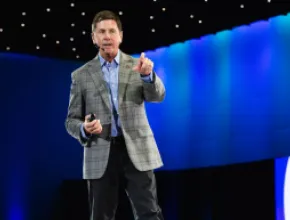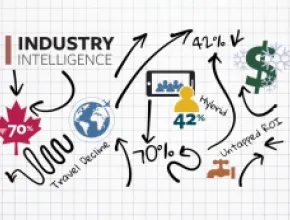Everyone has heard the high-level complaints about “what’s wrong with meetings”: Windowless, fluorescent-lit rooms, nap-inducing dark theaters, attendees sitting motionless for hours, sessions that are the same length whether there’s five minutes’ or an hour’s worth of information to be imparted...the list is long.
During the last century, attendees had to sit there and take it because there were no options—but today, as Shawna Suckow, founder of Senior Planners Industry Network (SPIN), puts it, “Attendees are just seconds away from grabbing their phones and tuning out entire sessions if we don’t step up our game.”
With this peril in mind, we sought out fresh thinking from several prominent figures in the planning world about how they’re trying to increase attendee engagement. What follows are their top strategies for 2014.
Mandate Speaker Interaction.
Planners should vet speakers for more than just their ability to deliver a great address, Suckow says.
“We’re moving away from the tired to the engaging. That begins with hiring speakers who ensure at least half of their sessions are either interactive with the audience, or allow time for collaboration among the participants themselves,” such as a question-and-answer period or other opportunity for attendees to throw the metaphorical ball back to the speaker.
“A session could have the best information in the world, but if it’s not delivered in an engaging way, nobody will pay attention.”
Have the Speaker Go Deep.
Gregg Fraley, an author and frequent speaker on creativity and innovation, cautions planners that even the best “classic” keynote speech is no longer enough. Fraley relates an experience he recently had in preparing to speak to the Amusement and Music Operators Association (AMOA), whose members are typically small businesses that operate vending machines.
“I probably spent a month thinking about the AMOA talk,” Fraley says. “I did Web searches; I did 12 one-on-one interviews with people in that industry, and went much deeper than I would have gone with just a one-on-one call with the meeting planner.”
Fraley’s talk was well-received. So well, in fact, that Jack Kelleher, the planner for the AMOA meeting, said, “It was obvious he understood our members’ businesses. He really connected with our group, so much so that we’ve asked him back to do an encore at our upcoming tradeshow.”
Empower Attendees in Small Groups.
Emily Friedman, associate production director at Q1 Productions, is trying smaller “exchange groups” to give attendees an intimate, less-formal venue for networking and exchanging ideas.
“Prior to a meeting we’ll survey the audience and ask them what topics they’d be interested in discussing in a smaller group, with three to 10 people at most,” Friedman says. “We’ll pick and choose from those topics, [link] each topic to a table, and attendees will go to that table. So there’s no one speaker, no slides or presentations, it’s very informal and allows attendees to become part of the conversation.
“It’s great to hear prominent speakers,” she adds, “but just because an attendee is not a [professional] speaker doesn’t mean they don’t have a lot to share.”
Low-Tech Captures Value, Too.
iPads and apps are enormously powerful for harvesting information about attendee movement, likes and dislikes, but planners shouldn’t forget the power of low-tech, as Gregg Fraley relates.
“I want to inspire people to walk away with ideas they can take action on,” he says. “I only did a 45-minute keynote [at AMOA]and said if you have any ideas based on what I’m saying, put it on a Post-It, and we had a big mural set up where people could put up those ideas. We got 200 ideas from a group of less than 200.”
Fraley’s job was then to collate all those ideas into a basic Word document, which was then distributed to attendees via e-mail.
“And so a week after the meeting, something of high value lands on their desk, and there’s maybe two or three ideas they can actually implement,” he remarks. “That’s real life—putting ideas where the rubber meets the road.”
Exit the Theater.
We’ve all gone to a bad movie and sat in the dark, squirming, through all 118 minutes. But hold your attendees hostage to fixed seating and bad content and they’ll head for the exits, Suckow warns.
“Who wants to sit in theater-style seating for hours on end, listening to one talking head after another?” she asks. “We have to rethink the room set-up, and how our information is delivered.”
Jon Bradshaw, CEO of West Sussex, U.K.-based Meetology, agrees: Change the seating and you change the dynamic. You can even do away with seats altogether.
“Research has shown that stand-up meetings are up to one-third shorter but just as effective” as their sit-down counterparts, he explains.
Inside to Outside.
Whether it’s their greenness, their variety, or just the extra oxygen they generate, one of the simplest things planners can do is bring in plants, Bradshaw says.
“If you want to improve creativity, “ he notes, “research suggests surrounding your attendees with green plants can improve it by 15 percent!”
You can either bring plants to the attendees or transport them to where the plants live: botanical gardens, parks and so forth.
This raises the additional possibility of dispensing with a conference room altogether, Bradshaw adds.
“Do you always have to meet in a room?” he asks. “Meeting outdoors generally increases levels of natural light, and meeting in different environments can help attendees think more expansively than when in locations familiar to them.”
Engage the Five Senses More Fully.
Too many meetings feature just two components: the speaker’s voice and the images he or she presents. This dramatically underutilizes the spectrum of human senses, and Bradshaw suggests alternative ways to engage them.
“Seek out creative art,” he says. “If you have to meet indoors then put some creative art on the wall, as that alone has been shown to improve creativity.”
Similarly, planners can take a cue from retail stores on the power of audio.
“Shops use music to change the emotions and behavior of customers, so why not in meetings?” Bradshaw says. “Energetic music prior to an opening session can increase energy levels.”
In addition, there are other senses out there that could be harnessed this way.
“Use smell,” Bradshaw adds. “Research suggests that lavender can help us relax, so how about using this in breakout areas?”
Realize the Power of Play.
Meetings are serious business, but sometimes play can lead to creativity and certainly more interaction than in even the liveliest one-way presentation. Bradshaw suggests creating a play area, and that playing with wooden blocks isn’t just for six-year-olds anymore.
“It is widely accepted that cognitive performance is improved through play,” he says. “And, as research also suggests, being distracted plays an important part in creativity. Isn’t it time you got that Giant Jenga out?”
Whether the planners of today are encouraging play, jazzing up the speaker experience, or trying other creative approaches, it’s clear that engaging the modern attendee has become a whole new ballgame.
Paul D. Kretkowski is an experienced contributor to Meetings Focus.






